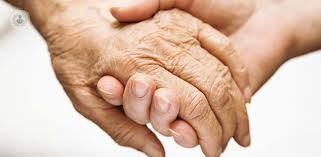Do you know the stages of Parkinson's?
Written by:Parkinson's disease is a degenerative disease of unknown cause suffering in Spain around 80,000 people. In cases that start below the age of 45 genetic factors are important. On the contrary, in normal cases (over 45 years), these factors play a limited role.
But we not very well know why- that Parkinson's is less common in smokers, coffee and probably reduces the risk of autism.
Stages of Parkinson
Premotor phase of Parkinson
 Parkinson begins long before their diagnosis, in what is known as premotor phase. Here the first symptoms appear: constipation and disturbances of smell acuity loss of the sense. These symptoms in years preceding the onset of symptoms typical of the disease engines.
Parkinson begins long before their diagnosis, in what is known as premotor phase. Here the first symptoms appear: constipation and disturbances of smell acuity loss of the sense. These symptoms in years preceding the onset of symptoms typical of the disease engines.
A very characteristic change in the premotor phase is called the REM sleep phase disorder, which is that during sleep, the subject exhibits significant movement, speech, or even shouts. This is because they are defective connections that should prevent the "dreams" did not have a motor rally. This disorder is diagnosed with sleep studies (polimnografía).
Motor stage Parkinson
Parkinson's diagnosis is made when starting the motor manifestations, known as phase motor. The clumsiness, "akinesia" in medical language, is always present and is the most incapacitating symptom. Its manifestations in everyday life are the change in font size, difficulty writing, fastening the shoelaces, lack of arm movement walking etc.. The tremor known as "resting" in medical language, is another characteristic disease symptoms. This tremor is not uncommon, however, about a third of patients never get to develop. In addition to these symptoms, the doctor observes while scanning a type of characteristic rigidity called "cogwheel".
According to specialists in neurology , when the disease progresses, gait disturbances arise in some cases memory loss.
Treatment of Parkinson
Once the disease have some medications that can slow its progression is diagnosed. The "symptomatic" treatment is good, effective and allows for the first years lead a normal life with the only drawback of the daily intake of medication. As the disease progresses, there are three types of treatments to improve the quality of life of patients and relieve symptoms. Such treatments are: The placement of electrodes in the brain, continuous injection of a substance called apomorphine, or administration through the stomach of another substance called Duodopa.
Finally, commenting that the investigation into the cause of the disease and new treatments is very active, both in Spain and abroad, so we expect the future with hope and enthusiasm.


